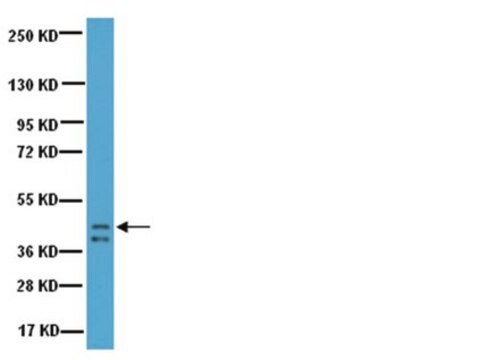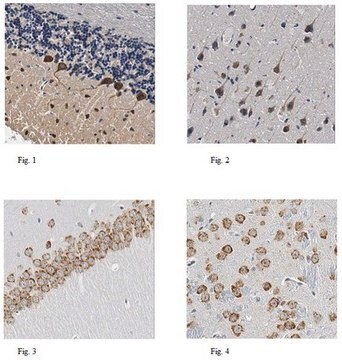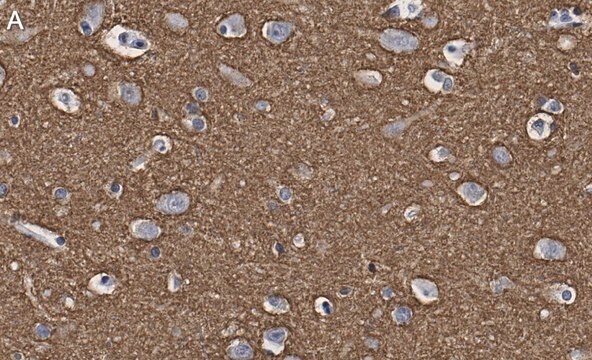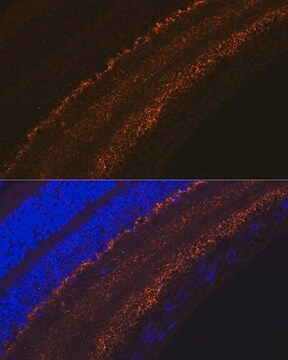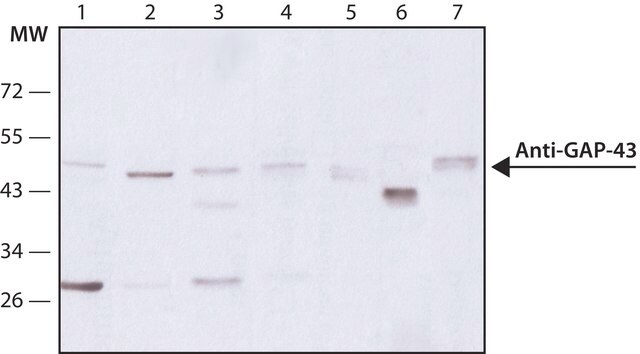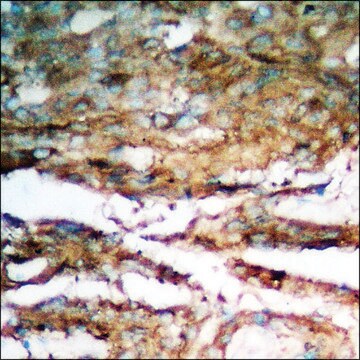MAB347
Anti-Growth Associated Protein 43 Antibody, clone 9-1E12
clone 9-1E12, Chemicon®, from mouse
Synonym(s):
Neuromodulin, B-50 Protein, Growth Associated Protein 43, neuromodulin
About This Item
Recommended Products
biological source
mouse
Quality Level
antibody form
purified immunoglobulin
antibody product type
primary antibodies
clone
9-1E12, monoclonal
species reactivity
feline, rat, hamster
species reactivity (predicted by homology)
human
manufacturer/tradename
Chemicon®
technique(s)
immunohistochemistry: suitable
immunoprecipitation (IP): suitable
western blot: suitable
isotype
IgG1
NCBI accession no.
UniProt accession no.
shipped in
wet ice
target post-translational modification
unmodified
Gene Information
human ... GAP43(2596)
General description
Specificity
Immunogen
Application
0.1-0.5 µg/mL of a previous lot on 4% paraformaldehyde perfused and fixed rat cerebellum and cerebrum tissue. The addition of 0.01-0.1% Triton X-100 to incubation buffer will increase cellular permeability.
Immunoprecipitation:
A previous lot of this antibody was used in immunoprecipitation.
5-10µg/mL in membrane preparations from 16-18 day embryonic cortical neuronal cultures.
Western Blot Analysis:
MAB347 will detect a single 43-48 kD band in western blots of membrane fractions of growing neurons.
Optimal working dilutions must be determined by the end user.
Neuroscience
Neuroregenerative Medicine
Quality
Western Blot Analysis:
1:1000 dilution of this lot detected GAP-43/B-50 on 10 μg of rat brain lysates.
Target description
Physical form
Storage and Stability
Analysis Note
Rat DRG tissue that has been subjected to a spinal nerve ligation and cultured neurons.
Other Notes
Legal Information
Disclaimer
Not finding the right product?
Try our Product Selector Tool.
recommended
Storage Class Code
10 - Combustible liquids
WGK
WGK 2
Flash Point(F)
Not applicable
Flash Point(C)
Not applicable
Certificates of Analysis (COA)
Search for Certificates of Analysis (COA) by entering the products Lot/Batch Number. Lot and Batch Numbers can be found on a product’s label following the words ‘Lot’ or ‘Batch’.
Already Own This Product?
Find documentation for the products that you have recently purchased in the Document Library.
Our team of scientists has experience in all areas of research including Life Science, Material Science, Chemical Synthesis, Chromatography, Analytical and many others.
Contact Technical Service